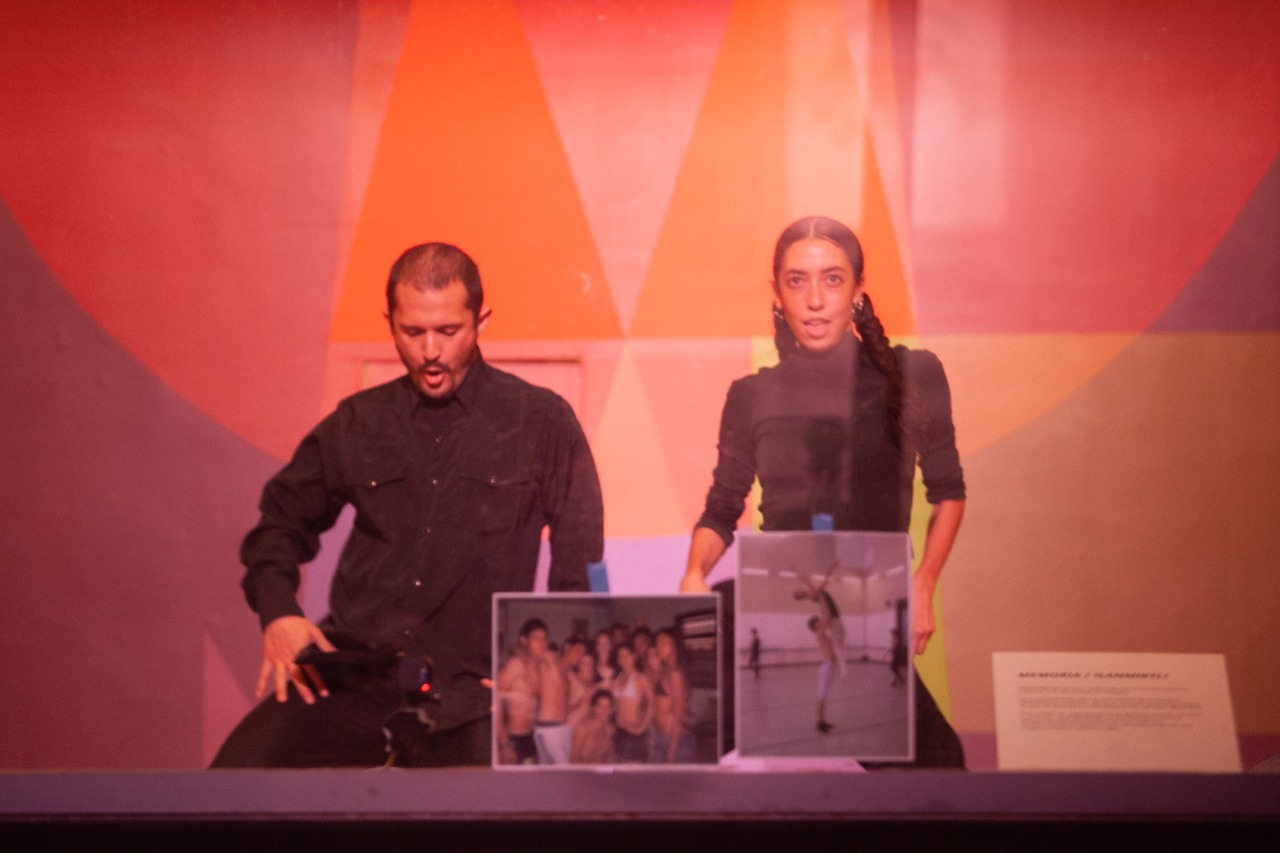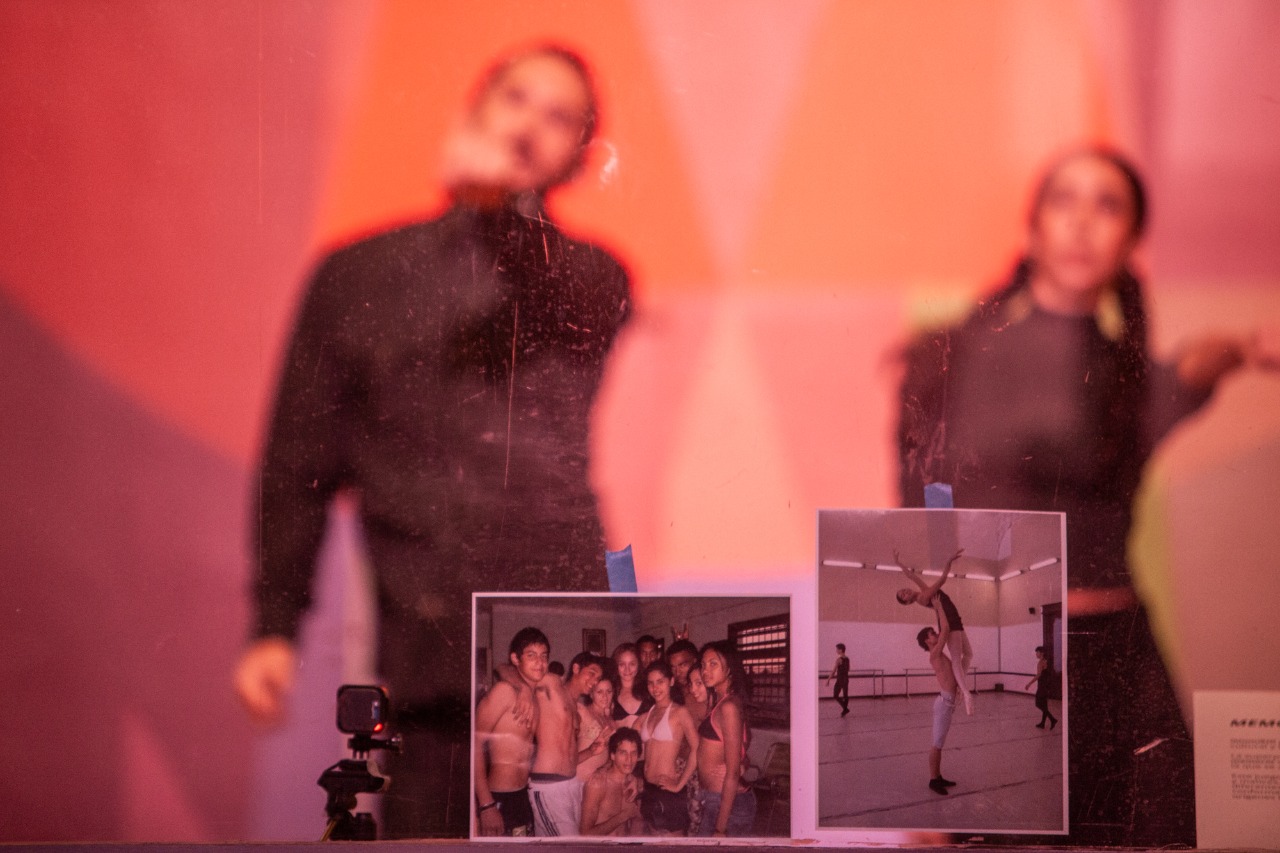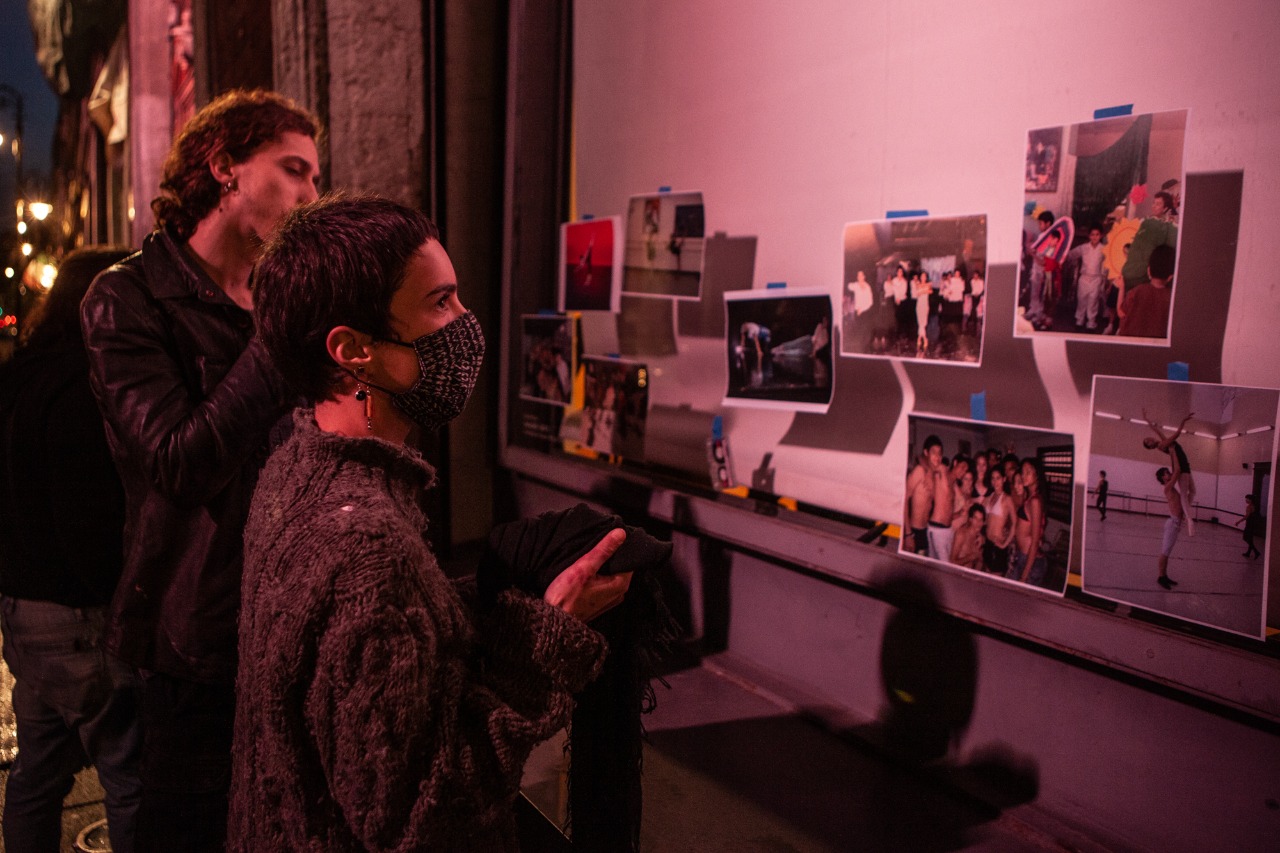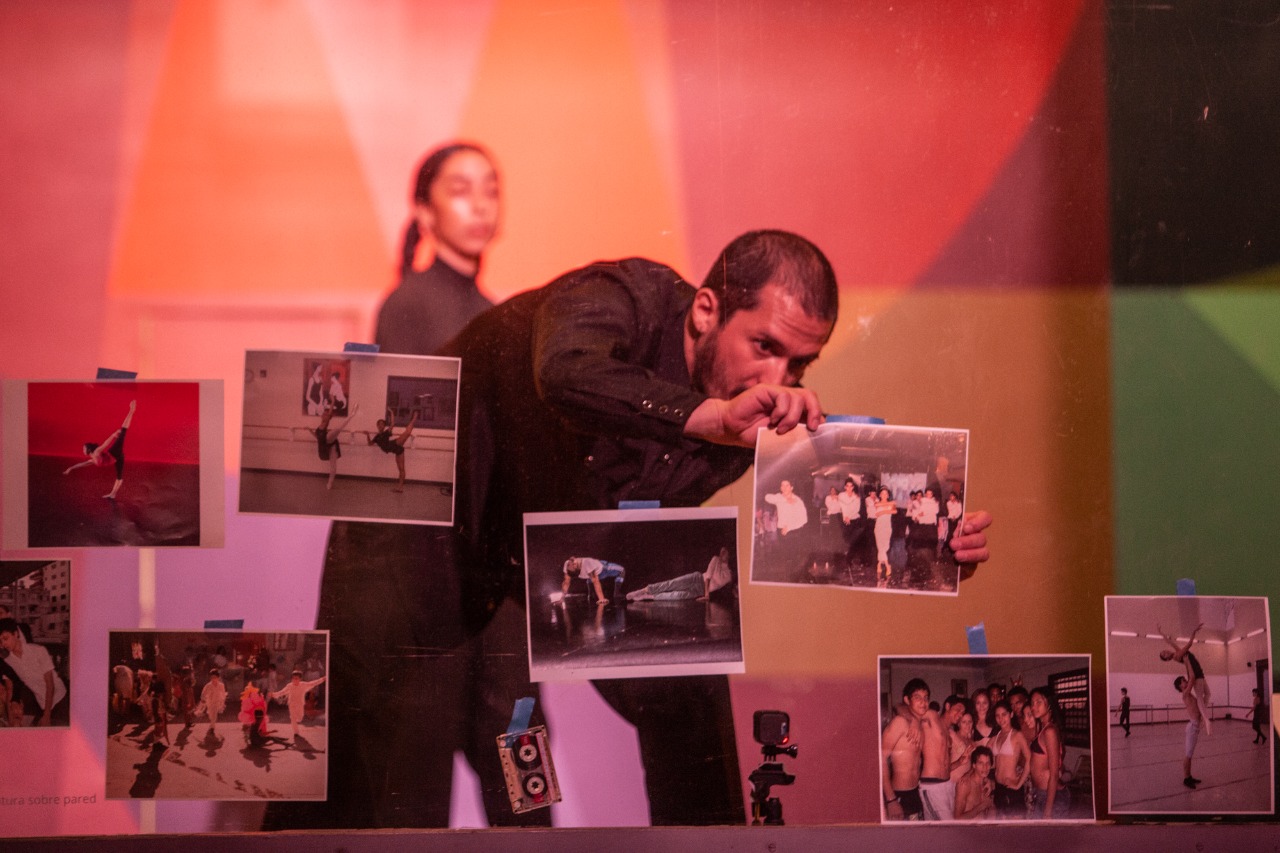DANZAS CRÓNICAS
a piece by camila arroyo & ricardo daniel
commissioned by centro cultural españa
ilanmiktli performance cycle
centro cultural españa, mexico city
august 2021
What gestures do we adopt throughout our life in order to shape our persona? What kinds of movements live within our bodies and which ones do we incorporate? What do these movements do? How many choreographies do dancers learn in their lives? How many of these remain in our bodies? As movement artists, we believe one of the most powerful ways to share knowledge is through embodied cultural practices. Our most recent research explores the quotidian, and not-so-quotidian, choreographies we learn throughout our lives, and the way these transform our bodies into archival vessels that chronicle our personal and collective histories. Thinking of choreography as an expanded field, and of our bodies as archives, we recently developed a piece titled “Danzas Crónicas”, translated to Chronic Dances, commissioned by Centro Cultural España in Mexico City. In the piece we dive into the various choreographies, gestures, and dances that have marked our lives and shaped our memory, creating a chronicle of our lives in performance.
In order to develop the piece, we have honed a choreographic practice in which we turn narratives, memories, and fictions from our lived experience into a performative record of our choreographic histories. Our objective is to collectively ask: To what extent are these choreographies essential parts of my personal and collective history? How is knowledge shared via these non-material, embodied practices? How has the erasure of alternative archives shaped our communities?
Danzas Crónicas es una exploración de la memoria corporal y sus ficciones. ¿Qué tanto recuerda el cuerpo? ¿Qué tanto olvida? ¿Qué tanto inventa? ¿Qué tanto inventan otrxs a partir de lo que ese cuerpo alguna vez bailó? Accedemos al registro coreográfico que se ha formado en nuestros cuerpos a lo largo de nuestra vida como bailarines, partiendo de la primera danza, los primeros pasos, las primeras secuencias que aprendimos y que permanecen dentro de nosotrxs. Jugamos con un mapa coreográfico de nuestras vidas, un mapa que recordamos, recreamos, inventamos, y deshacemos
a piece by camila arroyo & ricardo daniel
commissioned by centro cultural españa
ilanmiktli performance cycle
centro cultural españa, mexico city
august 2021
What gestures do we adopt throughout our life in order to shape our persona? What kinds of movements live within our bodies and which ones do we incorporate? What do these movements do? How many choreographies do dancers learn in their lives? How many of these remain in our bodies? As movement artists, we believe one of the most powerful ways to share knowledge is through embodied cultural practices. Our most recent research explores the quotidian, and not-so-quotidian, choreographies we learn throughout our lives, and the way these transform our bodies into archival vessels that chronicle our personal and collective histories. Thinking of choreography as an expanded field, and of our bodies as archives, we recently developed a piece titled “Danzas Crónicas”, translated to Chronic Dances, commissioned by Centro Cultural España in Mexico City. In the piece we dive into the various choreographies, gestures, and dances that have marked our lives and shaped our memory, creating a chronicle of our lives in performance.
In order to develop the piece, we have honed a choreographic practice in which we turn narratives, memories, and fictions from our lived experience into a performative record of our choreographic histories. Our objective is to collectively ask: To what extent are these choreographies essential parts of my personal and collective history? How is knowledge shared via these non-material, embodied practices? How has the erasure of alternative archives shaped our communities?
Danzas Crónicas es una exploración de la memoria corporal y sus ficciones. ¿Qué tanto recuerda el cuerpo? ¿Qué tanto olvida? ¿Qué tanto inventa? ¿Qué tanto inventan otrxs a partir de lo que ese cuerpo alguna vez bailó? Accedemos al registro coreográfico que se ha formado en nuestros cuerpos a lo largo de nuestra vida como bailarines, partiendo de la primera danza, los primeros pasos, las primeras secuencias que aprendimos y que permanecen dentro de nosotrxs. Jugamos con un mapa coreográfico de nuestras vidas, un mapa que recordamos, recreamos, inventamos, y deshacemos




